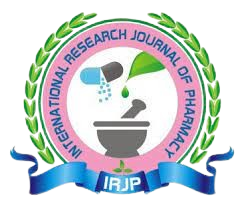STUDY OF THE HEALTH SEEKING BEHAVIOUR OF ELDERLY PEOPLE WITH NON-COMMUNICABLE DISEASE ATTENDING IN SGMH REWA
DOI:
https://doi.org/10.56802/irjp.2025.v16.i09.pp104-118Keywords:
Elderly population, Healthcare utilization, Chronic diseases, Non-communicable diseases, Health-seeking behaviourAbstract
Background: Improvements in healthcare infrastructure and living conditions have significantly enhanced life expectancy, particularly among individuals affected by non-communicable diseases (NCDs). This has led to a growing elderly population managing chronic health conditions.
Objective: To evaluate the health-seeking patterns of elderly individuals and determine the primary factors that influence their healthcare decisions.
Materials & Methods: A cross-sectional study was carried out in the Medicine Outpatient Department (OPD) of Sanjay Gandhi Memorial Hospital, affiliated with Shyam Shah Medical College, Rewa. The study involved 310 elderly participants (aged 60 years and above), who were interviewed using a semi-structured questionnaire. The data included details on healthcare utilization, history of illnesses, and socio-demographic characteristics.
Results: Among the 310 respondents, the majority (211, 68.06%) were aged between 60 and 70 years. The sample consisted of 176 males (56.8%) and 134 females (43.2%). More than half (167, 53.9%) had no formal education. A large proportion (239, 77.10%) reported living with chronic health conditions, with hypertension being the most common (113, 36.4%), followed by locomotor issues (81, 26.12%). Private healthcare services were preferred by 177 individuals (57.10%), and 183 participants (59.03%) reported undergoing regular medical check-ups. A significant number (231, 74.52%) were financially reliant on their children, and 232 (74.88%) indicated that the nearest health center was located over 5 km from their residence. Most healthcare costs were borne by their children, with health insurance covering a smaller portion (56, 18.06%). Age emerged as a significant factor affecting their healthcare-seeking behaviour.
Conclusion: The study reveals that a majority of the elderly population falls within the 60–70 age group. There is a critical need to increase awareness about aging-related health conditions. Many chronic diseases such as hypertension, diabetes, and osteoarthritis remain either undetected or inadequately treated in this demographic.








